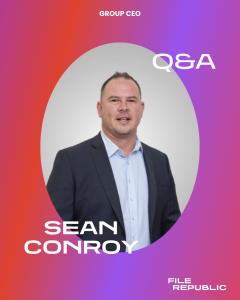Ways to use marketing to quickly scale your web traffic.
The impact of the pandemic on businesses over the last couple of years has been devastating. Still, if there is one silver lining, this has shown us all the importance of being agile and ready to capitalise on opportunities as they present themselves. We are now 3 months into 2023, and now more than ever, having a comprehensive marketing strategy gives you an edge in today’s competitive market.
In this blog, we will focus on how leveraging effective marketing practices can drive more web traffic to your site and help scale your business for the future. Whether you’re a small business or have teams across continents, implementing these strategies can immediately impact your online presence right away.
1. Understand the latest consumer trends and how to leverage them
Holy heck, how can anyone keep up with the latest trends?
Twitter to Facebook, Instagram carousels to Reels, TikTok back to Snapchat, back to static images, for all we know, the next trend will be dial-up internet and yellow pages advertising.
Staying on top of the ever-changing consumer trends can challenge businesses.
The answer is… What you like isn’t important; what your customer likes that matters.
How do you do this?
Write out your current customer journey, where they are coming from, their pain points, and their buyer persona.
You need to analyse your existing points of contact to find out which trends are having the biggest impact on your target audience so you can ensure you get the most bang for your buck when leveraging the latest trends. This also saves money when investing time in the latest big thing.
TikTok takes a lot of time and might not reach your target audience, so do you invest time and money on a tool that is more for vanity than ROI?
2. Utilise artificial intelligence to maximise customer engagement
While AI can not replace Marketing Managers or Content Managers, it can help them save hours a week.
Utilising AI within marketing strategies can maximise customer engagement, ensuring businesses connect to their target audiences more effectively and efficiently.
AI can help businesses determine which campaigns will have the highest success rate, decreasing time wasted on unsuccessful plans and enabling well-thought-out, high-converting strategies.
The ability to utilise AI means that businesses can now acquire real-time information about their customer base, allowing them to update their marketing plan accordingly and identify any immediate changes that need to be made to reach maximum effectiveness. We recently found a new app that will save hours of our own time editing and uploading podcasts. If you want to start a podcast, we recommend https://www.descript.com/
Let’s be honest, who wouldn’t want more time in their day?!
3. Establish a strong presence on social media platforms
With social media taking over the digital space, setting up your company on those channels can be overwhelming.
But don’t worry – taken step by step, it doesn’t have to be intimidating! Your first step is to just get started.
You can choose which platform or platforms to start with, such as Facebook and Twitter, if you’re targeting a B2C market or LinkedIn for a more professional market. Creating content that resonates with your target audience is essential- focusing on interesting and relevant topics to keep followers engaged.
Spend some time exploring your competition’s social media for posts ideas that may work best for you.
Have fun, be creative and play around with each platform’s different tools!
4. Create personalisation through client communications and campaigns
Personalisation is a crucial factor in any client communication, no matter your industry or product offering. It can effectively create connections with audiences and increase engagement around your emails. It doesn’t have to involve a huge overhaul of your current strategy, though – small details with big impacts, such as addressing the recipient by name or tailoring the tone of your emails to fit the individual, are great places to start. Need more ideas? Consider segments tailor-made for specific customer types, automated send times based on recipient preferences and automatic recommendations based on previous purchases. Whichever route you take, personalisation through email campaigns shows that you care about your customers and want to give them the best experience they can get – so make it count!
5. Invest in content creation that is optimised for SEO
Whether you read this or not, this is part of a successful SEO strategy.
If the content is considered “King”, relevant and SEO-driven content is Taylor Swift and Ed Sheeran with a splash of Harry Styles.
With great content, you can boost your page rankings, increase website traffic and enhance customer experience by providing valuable insight or advice. Investing in content creation optimised for SEO means that you’ll have the edge over the competition and ensure that your audience can find your web pages quickly and easily.
Boasting user-friendly navigation, helpful information and fresh copy, you can use strategic keyword placement to increase visibility and analytics tracking to analyse performance. Take the plunge today and invest in great content – your website – and search engine rankings will thank you for it!
And a top tip that will boost your website immediately, make sure you have a current and active sitemap on your website. You might not know what that means but Google uses it to find your information.
FINALLY but if you don’t have time to do any of the above, of course, this is our time to give ourselves a cheeky plug and recommend our services but also
6. Make sure your website is mobile-friendly and fast loading
When building your website, remember to make sure it’s optimised for mobile!
With a fast-paced business life, people rely on their mobiles to Google, Bing, and Duck Duck Go and upload their lives to social media.
Ensuring that your website is mobile-responsive is essential for success.
A fast-loading website is essential as today’s internet users have little patience for waiting and will likely move on to another if a page takes too long.
Many search engines consider website speed in their ranking algorithm — using a slow site could result in ranking lower in search results! To make sure your site is up to standard, use resources such as Google’s Mobile-Friendly Test and PageSpeed Insights to check your score.
If you’ve made it this far, well done you; you are already ahead of the game. Now if you want to chat with one of The Marketing Room experts, where we will give you solid tips to improve your current marketplace position.
We may be the in-house business partner you’ve been looking for all along.







